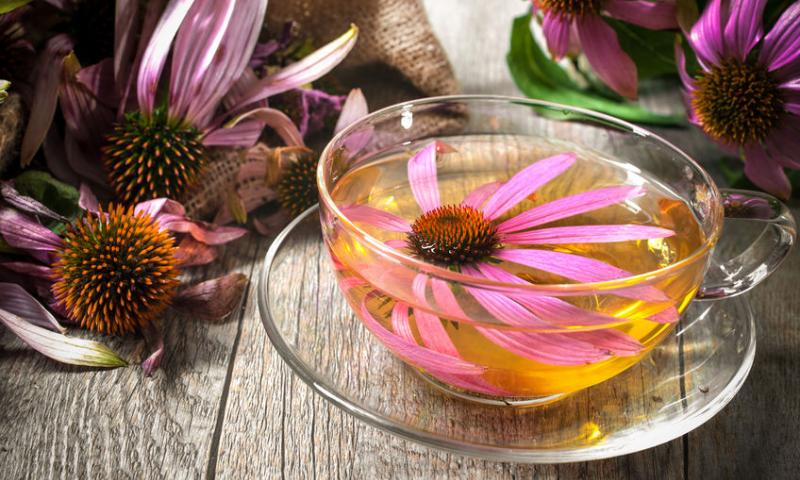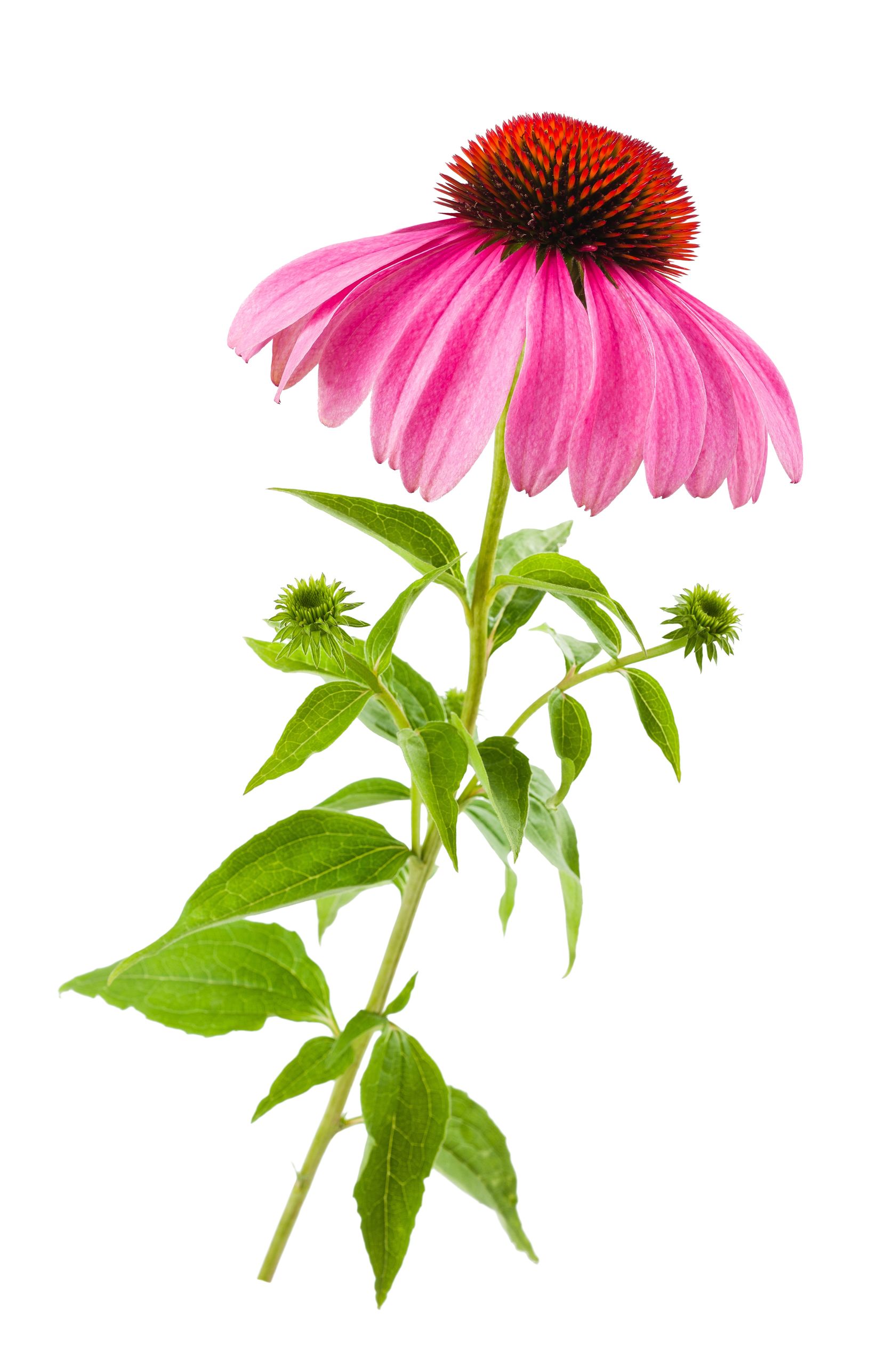 />
/>
LATIN NAME: Echinacea purpurea
FAMILY: Asteraceae
GENUS: Echinacea
COMMON NAMES: eastern purple coneflower, hedgehog coneflower, or purple coneflower
ORIGIN: originates from eastern North America
 BOTANICAL INFORMATION
BOTANICAL INFORMATION
Echinacea is a perennial herbaceous plant up to 70-80 (100) cm height with sturdy, slightly branched stems. The lower leaves are rosette, broadly oval, large, on long petioles; the upper ones are lanceolate and sessile. Ray flowers are single-row, tubular, of red, crimson, purple color; they are collected in the basket inflorescences, of up to 10-15 cm in diameter. Flowering period is from July to September (about 60 days).
CHEMICAL COMPOSITION
The herb of Echinacea purpurea contains:
- polysaccharides (heteroxylans, arabinoraminogalactans)
- essential oils (0,15-0,50%)
- flavonoids
- oxycoric (chicory, ferulic, coumaric, caffeic) acids
- tannins
- saponins
- polyamines
- echinacin (polyunsaturated acid amide)
- echinolone (unsaturated ketoalcohol)
- echinacoside (glycoside containing caffeic acid and pyrocatechin)
- organic acids
- resins
- phytosterols
Rhizomes and roots include:
- inulin (up to 6%)
- glucose (7%)
- essential and fatty oils
- phenol carboxylic acids
- betaine
- resins
All parts of the plant contain:
- enzymes
- potassium
- calcium
- selenium
- cobalt
- silver
- molybdenum
- zinc
- manganese
ECHINACEA TINCTURE RECIPE
Pour vodka in a glass container over dried ground leaves with 1:10 ratio. Leave in a dark, cool, dry place for 10 days. When ready, strain and pour into small bottle with dark glass. Take 25-30 drops 3 times a day before meals.
“I take goldenseal, Echinacea and cod liver oil when flying to boost my immune system.”
Janelle Monae
*This article is for informational purposes only. We suggest consulting with a physician before using these or any other herbal supplements.
